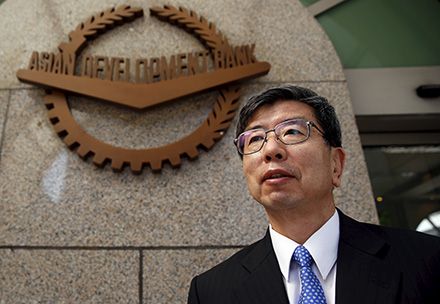The ADB’s treasury department is increasing its funding activities and focusing on local currencies as it responds to growing demands for the bank’s assistance.
Pierre van Peteghem, ADB treasurer, said the bank faced higher borrowing costs as a result of distortions in the global capital markets over recent months.
“Funding costs with respect to Libor for all MDBs, including the ADB, have increased significantly. This is related mainly to the inversion of the US dollar swap curve,” said van Peteghem, who estimates that the bank has faced an overall increase of 10bp–20bp in its borrowing costs.
The bank’s funding programme this year stands at US$20.6bn, of which it has already raised more than 50%.
“Market access is not at all compromised, but of course it comes at a slightly higher price,” said Peteghem.
US dollar benchmarks account for the vast majority of the bank’s funding, but the treasury department is also keen to access local markets to match the loans it extends to its clients.
The ADB made disbursements in 2015 and the beginning of 2016 in renminbi, Indian rupees, Thai baht, Philippine pesos and Georgian lari.
“Loans denominated in local currencies are now one fourth of our non-sovereign transactions,” said van Peteghem. “One of the major initiatives for the treasury going forward is developing that side of the market.”
The ADB has issued in the offshore rupee, or Masala, market, and is working on its second Georgian lari bond. It has also expressed an interest in returning to China’s Panda bond market, where it sold bonds in 2005 and 2009 to finance projects in mainland China.
“We are in extensive dialogue with the Chinese authorities,” said van Peteghem. “This dialogue has been extremely constructive, and it is my expectation that we will soon be able to achieve some kind of compromise that will allow the ADB to reaccess the Panda bond market.”
The combination of the bank’s ordinary capital resources and the concessional lending resources will also strengthen the ADB’s liquidity and capital base.
The three major rating agencies have all affirmed the ADB’s Triple A ratings since the capital combination was approved at the 2015 meetings.
Standard & Poor’s said the ADB’s risk-adjusted capital ratio would “improve significantly” after the merger.
“This is mainly due to the substantial increase in equity, decreased concentration risk of the consolidated portfolio, and reduction in single country exposures due to diversification,” S&P analysts said in a July 2015 ratings note.
Van Peteghem said that the bank will issue more Green bonds this year to finance its expanding climate finance portfolio. The bank has issued just one US$500m benchmark in March 2015 and has a target of channeling US$6bn of funding a year to climate-change projects by 2020.
“You can expect at least one Green bond this year, more likely two,” said van Peteghem.
To view all special report articles please click here and to see the digital version of this report please click here.
To purchase printed copies or a PDF of this report, please email gloria.balbastro@thomsonreuters.com.
